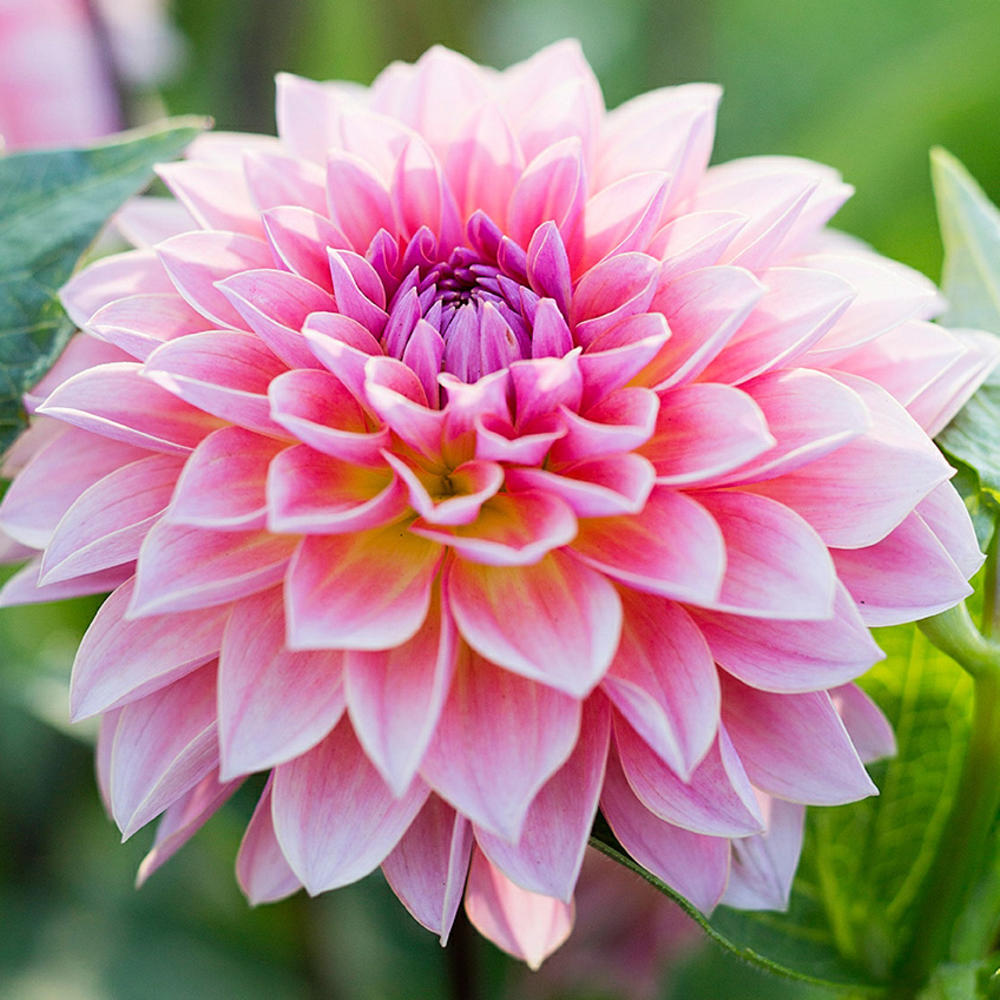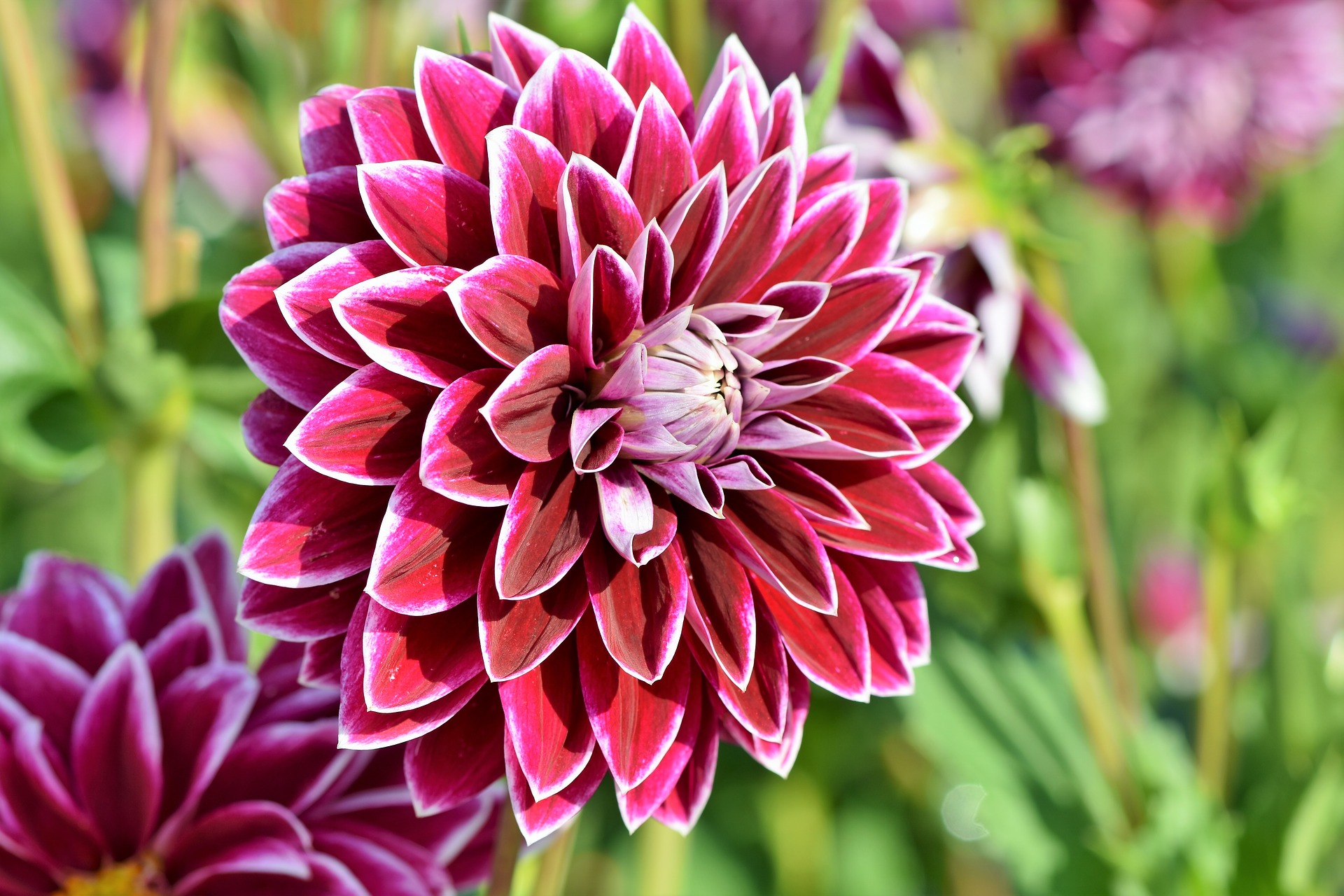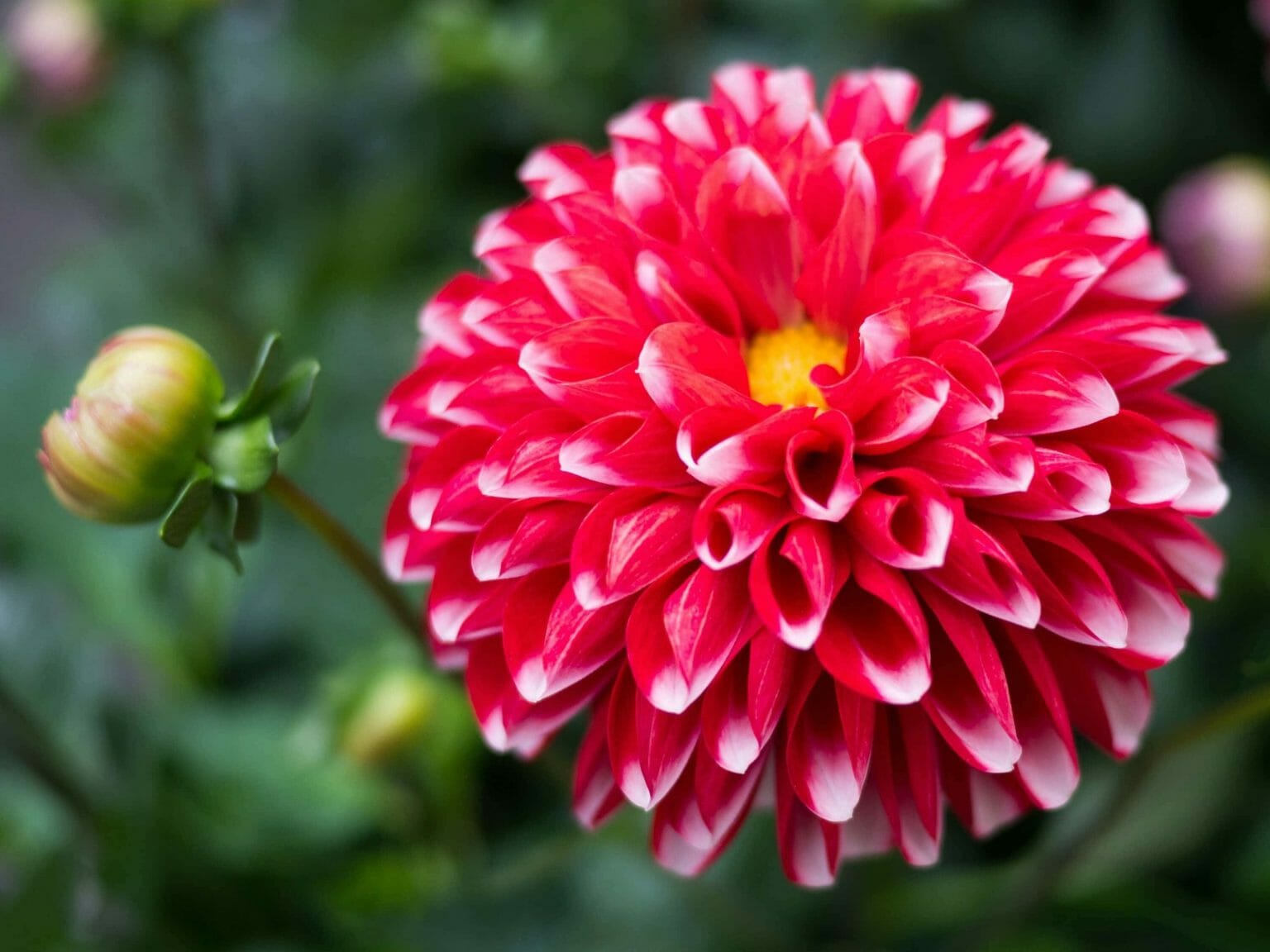Dahlia Dimples - Unpacking A Curious Concept
Table of Contents
- What Are We Even Talking About?
- Exploring Facial Dahlia Dimples
- Are There Other Kinds of Dahlia Dimples?
- Dahlia Dimples - A Flower's Unique Charm?
Have you heard the term "dahlia dimples" and found yourself wondering just what on earth it means? You're certainly not alone in that feeling, you know. This idea, or maybe we could say this phrase, has popped up in a few different places, and it seems to describe quite a few distinct things. It's a bit like trying to catch smoke, really, because the meaning changes depending on who you ask or where you see it mentioned. So, we're going to take a closer look at what this curious expression might be getting at.
From what people are saying, "dahlia dimples" can refer to a facial mark that doesn't show up often, something that looks a lot like what folks call "angel kisses" or "butterfly kisses" right there on either side of someone's mouth. It's also been used to talk about little dips on the lower back, or even small marks on the petals of a flower. Pretty much, it’s a phrase that covers a lot of ground, and sometimes, actually, it even gets mixed up with common skin features that many people have. We’ll try to sort through some of these different ideas for you.
It's interesting, isn't it, how a single phrase can have so many different explanations? Some people connect it to things seen on social media, while others talk about it in terms of how flowers grow, or even just general body marks. We'll explore these various interpretations of "dahlia dimples" to give you a clearer picture of what this rather fascinating concept could mean. Basically, it’s about exploring the various ways this term has been used and understood.
- Studio Movie Grill Alpharetta
- Coverland Seat Covers
- Wet And Wild Hawaii
- Sigma Boy
- New Mexico Fish And Game
Exploring Facial Dahlia Dimples
When people talk about "dahlia dimples" in connection with faces, it often points to a very specific kind of mark. These are sometimes thought of as those little indentations, sort of like small hollows, that show up on the cheeks. They might, for example, look like the soft petals of a dahlia flower, which is where the name probably comes from. These facial marks, in some ways, are seen as something quite pleasing, something that adds a special kind of charm to a person's face, especially when they smile. It's a bit like a natural decoration, really, that some folks are just born with.
Angel Kisses and Butterfly Kisses - What are Dahlia Dimples?
Some descriptions of "dahlia dimples" paint a picture of them as a rare facial mark, something not everyone has, that looks a lot like "angel kisses" or "butterfly kisses" near the mouth. These are the small, gentle indentations that appear on each side of the mouth, sort of giving a person's smile an extra bit of sweetness. It's a rather lovely way to think about them, like a little touch of magic on someone's face. These marks are often thought of as something that just makes a person's face more appealing, you know, adding to their overall look.
We find these facial features, including "dahlia dimples," quite cute or pleasing to look at, yet, as a matter of fact, we don't really know a whole lot about them or exactly why they form. Most researchers and people who study these things tend to say that these small indentations on the sides of the mouth might be something you get from your family, passed down through generations, or they could even be created through a kind of cosmetic procedure. They add a special touch to someone's facial features, making a person's smile and personality seem to shine a little brighter. This particular kind of facial mark, whether you're born with it or it comes about another way, just gives a face a certain something.
These marks, sometimes called "dahlia dimples," are small dips on the cheeks that look a bit like a flower's soft parts. They are one of many different kinds of these facial indentations that can be natural, meaning you're born with them, or they can be made through a cosmetic operation. Cheek dimples, the little hollows on the sides of the mouth, might be something you inherit, or they can be put there by a surgical method. We can think about the possible family connections, and how these marks are seen as something that makes a person more pleasing to look at. They really do add a special something to a person's facial appearance.
It's interesting to consider that these "dahlia dimples" are a distinct facial mark that has become quite talked about in recent times, especially when people are discussing looks and how we appear. It's important to know that "dahlia dimples" are not a medical term or an actual part of the body, but rather an idea that became well-known because of social media, particularly on a platform like TikTok. They are often talked about alongside "dahlia piercings," which are a kind of lip piercing that goes in the inner corner of the mouth. So, in a way, the idea of these facial marks got a lot of attention because of something else entirely. You know, it’s all tied together in a curious way.
People often get "dahlia dimples" mixed up with "smile lines," which are two different facial features. "Dahlia dimples" are thought of as lasting indentations on each side of the chin, while "smile lines" are the little creases around the eyes that show up when someone smiles. It’s a pretty common mix-up, actually, but they are distinct. "Dahlia dimples," when we talk about them as facial features, are sometimes also known as "dimples of Venus." These are two small dips found between the chin and the outer edges of the lips. They tend to be more noticeable in people whose faces have a rounder shape. So, there are many ways this term gets used for facial features.
Dahlia Dimples - A Social Media Sensation?
"Dahlia dimples" have, apparently, become quite popular because of a trend on social media. People have, in fact, claimed to have these dimples near where their cheeks crease when they make a happy face. This is something that really took off on platforms like TikTok, where lots of folks started talking about them. It's a rather recent idea, this social media trend. People have been showing off what they call "dahlia dimples" as their cheeks make a fold during a smile. It's a way that social media can really make a concept spread quickly, whether it's something truly new or just a fresh way of looking at something familiar.
Whether these "dahlia dimples" come from a type of piercing or are just a concept people imagine, they really show how much social media can influence what's popular, start conversations, and even inspire people. This whole idea, you know, just popped up and got a lot of attention. It's fascinating how a phrase can gain such traction and become a topic of widespread interest, sometimes without a clear, single meaning. It’s all about how ideas move around online, in some respects.
Are Dahlia Dimples Connected to Dahlia Piercings?
There's a lot of talk about "dahlia dimples" being connected to "dahlia piercings." A dahlia piercing is a kind of body modification that involves placing jewelry at the inner corner of the mouth, near where the lips meet the cheeks. This connection suggests that the term "dahlia dimples" might have come about because people associate the appearance of these piercings with natural dimples, or perhaps even that the piercings themselves might, over time, create a similar indentation. It's a rather interesting thought, that a body modification could inspire a term for a natural facial feature, or vice versa.
Some people wonder if dahlia piercings can actually leave marks that look like dimples. This question, you know, often comes up when people are thinking about getting such a piercing. It's worth exploring the possible things that could happen, both the good and the not-so-good, with this kind of body art. The origins of the term "dahlia dimples" are not always clear, but their association with these piercings is definitely a part of the conversation. So, in a way, the piercing itself has helped to popularize the idea of these particular facial marks.
Are There Other Kinds of Dahlia Dimples?
It turns out that the term "dahlia dimples" isn't just used for facial features. There are other parts of the body where small indentations might be called by this name, which can make things a little confusing, actually. It’s like the phrase has branched out to describe different kinds of marks on the body. We should, perhaps, look at these other uses to get a more complete picture of what "dahlia dimples" can mean. It's pretty interesting how one phrase can apply to so many different things.
Dahlia Dimples - More Than Just a Face Feature?
In some discussions, "dahlia dimples" are described as small indentations that appear on the lower back. These are not, it's important to note, to be mixed up with the facial marks we talked about earlier. These back dimples are a completely different thing, located on a different part of the body. They are sometimes called "dimples of Venus" as well, which adds another layer of potential confusion, as that name is also used for facial dimples. It's a bit of a tangle, trying to keep all these meanings straight, but they are definitely distinct from the ones on the face.
We can learn about what causes them from a scientific point of view, look at examples of them, and consider why they are not a common mark among everyone. These lower back indentations, you know, are just one of those things that some people have and others don't, and there are reasons for that which are connected to how our bodies are put together. It's quite fascinating, really, how our bodies can show such small, unique features.
Dahlia Dimples - Is it Really Cellulite?
Another way "dahlia dimples" is sometimes used is to talk about what's more commonly known as skin dimples or cellulite. These are described as small depressions or bumps on the skin, and they affect a very large number of women, something like up to 90 percent. So, this use of the term "dahlia dimples" is actually referring to a very common skin characteristic. It's a bit surprising, perhaps, to see such a poetic name applied to something so widely experienced and often talked about in a different way.
When people refer to "dahlia dimples" in this context, they are talking about a common concern for many individuals regarding how their skin looks. These dimples show up as small dips or raised areas on the skin's surface. So, in this instance, the term "dahlia dimples" is basically just another way of describing cellulite, which is a very widespread and well-known feature of skin. It really highlights how the same phrase can be used to describe completely different things, doesn't it?
Dahlia Dimples - A Flower's Unique Charm?
Beyond human features, the term "dahlia dimples" also, quite literally, refers to the dahlia flower itself. This is where the name truly makes sense in a direct way. It's about certain kinds of dahlia flowers that have small indentations or little hollows on their petals. These unique marks give the flowers a really pleasing and special look, making them stand out from other dahlias. It's a charming quality that makes these particular flower types quite sought after by those who appreciate garden plants.
These "dahlia dimples" on the flowers are a distinct kind of the well-known dahlia flower. They are marked by special formations on their petals that have a certain feel to them, looking a lot like small indentations. It's quite different from how traditional dahlias usually appear, which often have petals that are flat or just a little bit ruffled. These "dimpled" dahlias, you know, have blooms that are truly one of a kind. It's a wonderful example of nature's variety and how different plant types can show such unique characteristics.
What Makes a Dahlia Flower Have Dimples?
When we talk about "dahlia dimples" in flowers, we're looking at small indentations or creases on the petals of certain dahlia types. These interesting marks are created by the plant's own natural makeup, basically its genetics. It’s not something that happens by chance; it’s built into the plant’s very being. We can learn about what a dahlia dimple is, how it comes into being, and how to truly appreciate this special quality in the flower. It's a pretty neat detail that makes these flowers extra special.
Discovering the interesting event of "dahlia dimples" means finding unique indentations in certain kinds of dahlia plants. We can look into what these marks mean for the plant itself, where they come from in history, and what kind of care these flowers might need. These flower dimples have their own meaning, too. Dahlias often stand for grace, inner strength, and being able to come up with new things. When they have these little dimples, those meanings take on a bit of a playful turn, which just makes them even more interesting to consider. It’s a bit like a secret language in the garden, really.

How to grow dahlias - Sunset Magazine

Dahlias: How to Plant, Grow, and Care for Dahlia Flowers | The Old

Know Your Dahlia: Symbols, Meanings, and More - Petal Republic